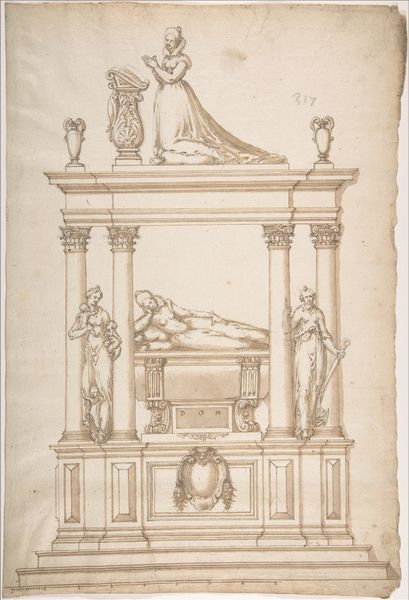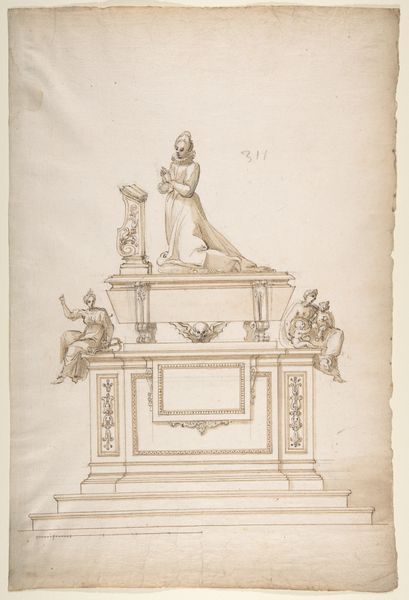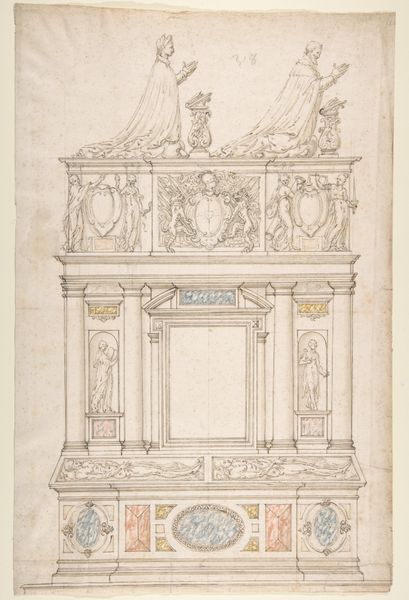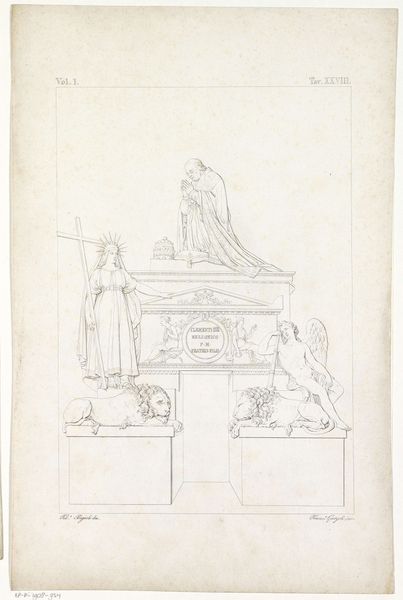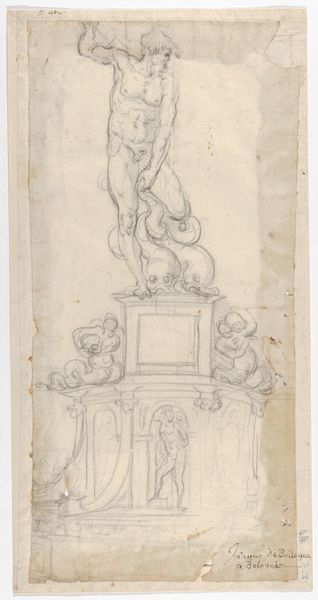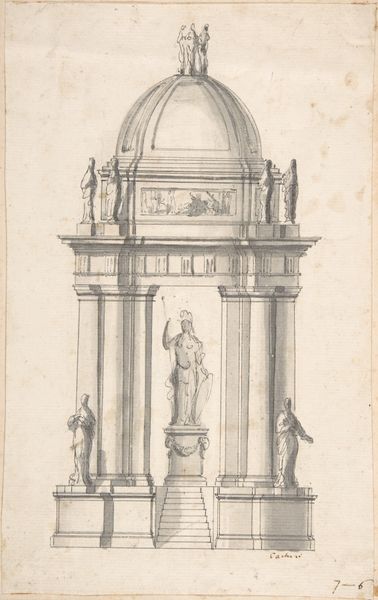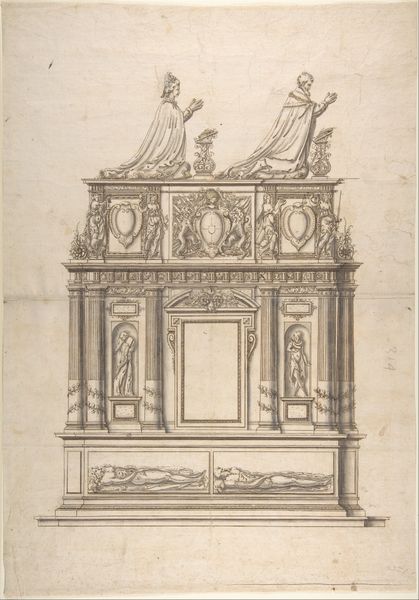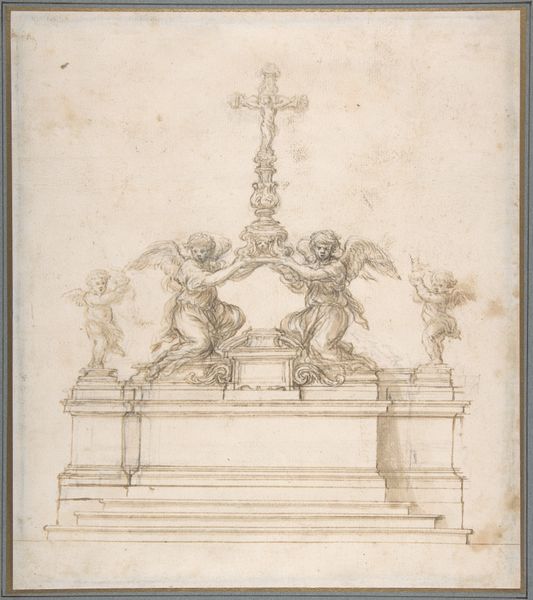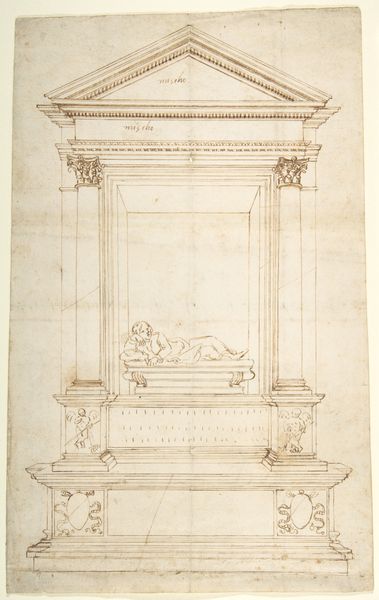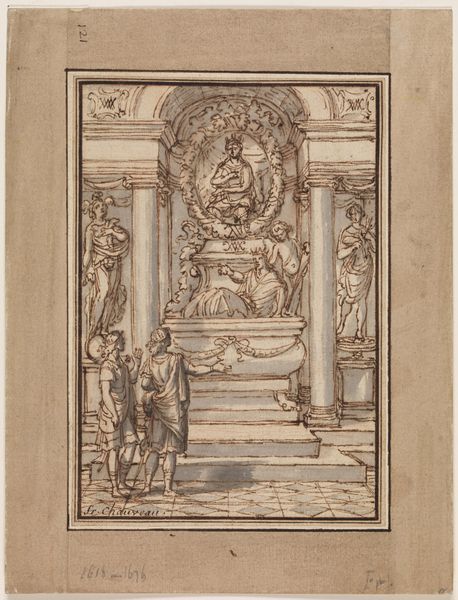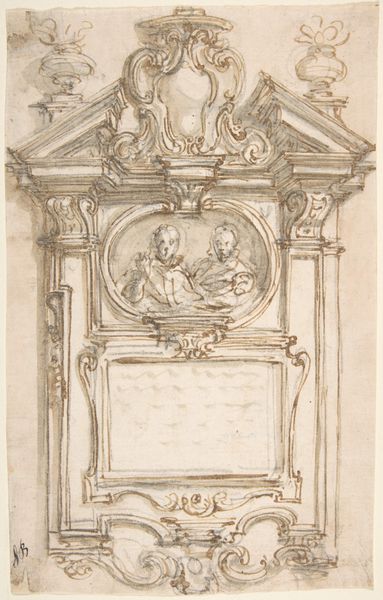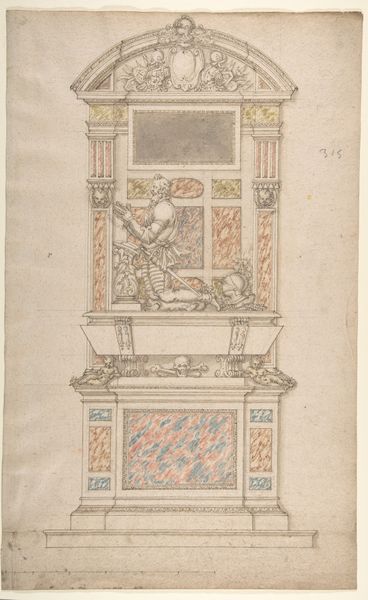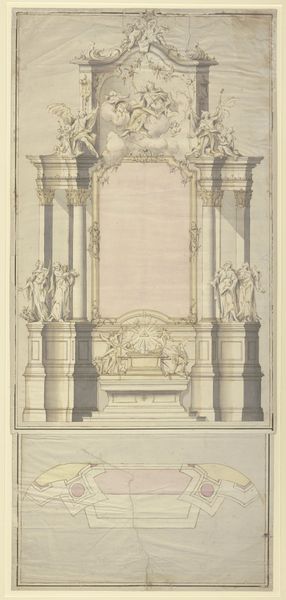
drawing, paper, pen
#
portrait
#
drawing
#
landscape
#
etching
#
figuration
#
paper
#
form
#
11_renaissance
#
pen
#
history-painting
#
italian-renaissance
Dimensions: sheet: 17 5/16 x 11 9/16 in. (43.9 x 29.3 cm)
Copyright: Public Domain
Editor: So, here we have a 16th-century drawing, "Design for a Lady's Tomb," by an anonymous artist, rendered in pen on paper. It strikes me as a very elaborate and architectural drawing. What grabs your attention about it? Curator: What intrigues me is the production of this design itself. Consider the labor involved in creating such a detailed drawing, even before the tomb's actual construction. It reveals a sophisticated system of artistic patronage, where skilled draftsmen were commissioned to visualize these monuments. Who had access to that kind of commission, and what can that reveal? Editor: That’s a good point. The detail definitely suggests it was a high commission. Are you suggesting the drawing itself almost functions as a status symbol, even before the tomb is built? Curator: Precisely. The very materiality of the drawing—the paper, the ink, the skill of the draughtsman— speaks to a certain level of consumption and social standing. Think about the market for these designs, the workshops that produced them, and how they circulated among wealthy patrons. Editor: It's interesting to think about the design as a commodity in itself, separate from the actual tomb. What about the figures depicted, particularly the reclining woman? Curator: Her presence is integral. Consider the materials they planned to use for that sculpted form - stone, maybe marble - all requiring quarrying, transport, carving... These materials speak to the lady’s identity in the community. The selection and handling of these substances, transformed through labor into a representation, solidify her status. Editor: I see what you mean. Thinking about the tomb's materials and their origins does shift the focus away from simply admiring the artistic skill. It opens up questions about labor and economic systems. Curator: Exactly. It’s a testament to how art objects are inextricably linked to the material conditions of their creation. Editor: This really reframes how I think about art. It’s not just about aesthetics, but also about the resources and labour that go into making it, and the society that allows its creation.
Comments
No comments
Be the first to comment and join the conversation on the ultimate creative platform.
